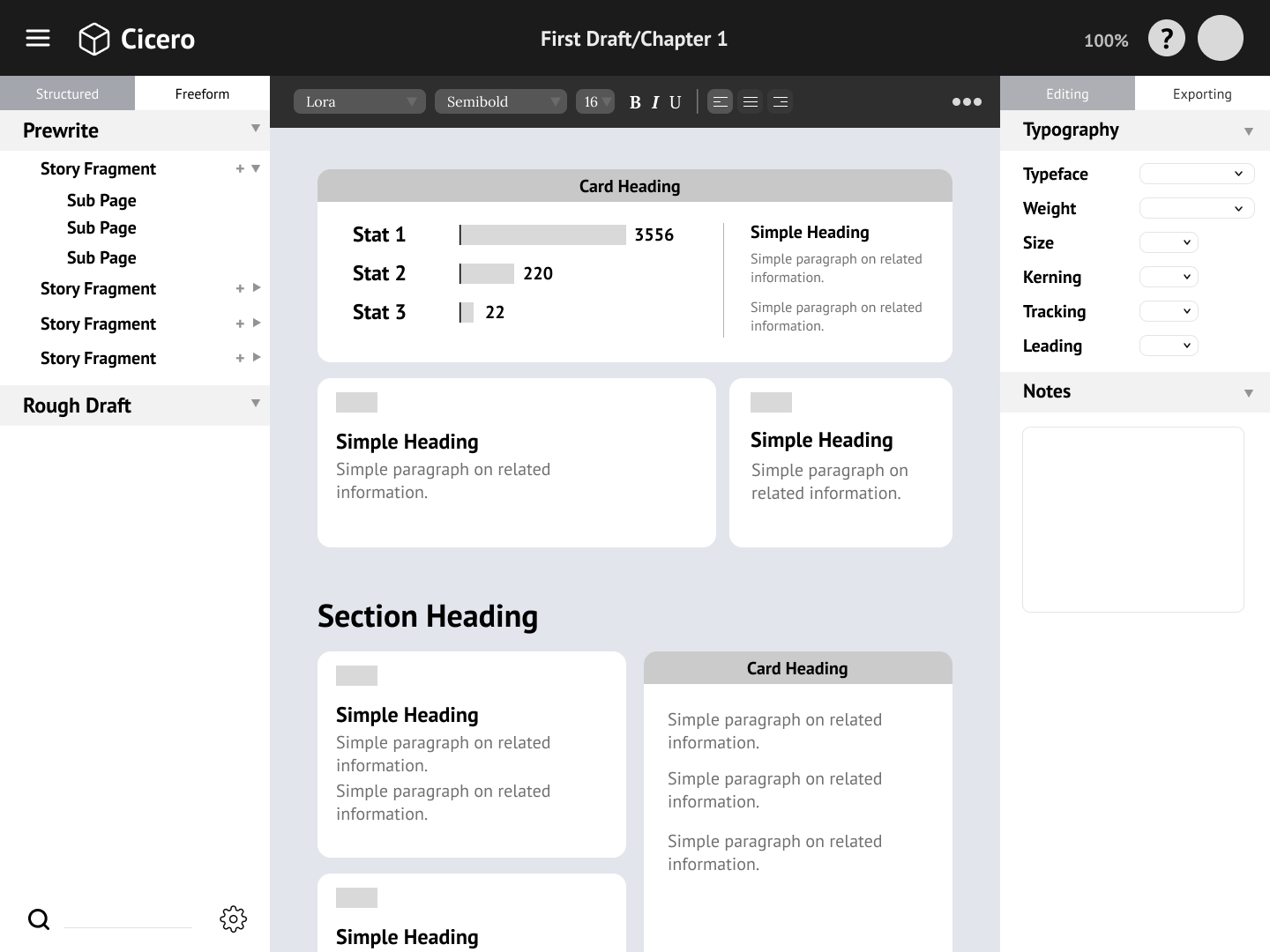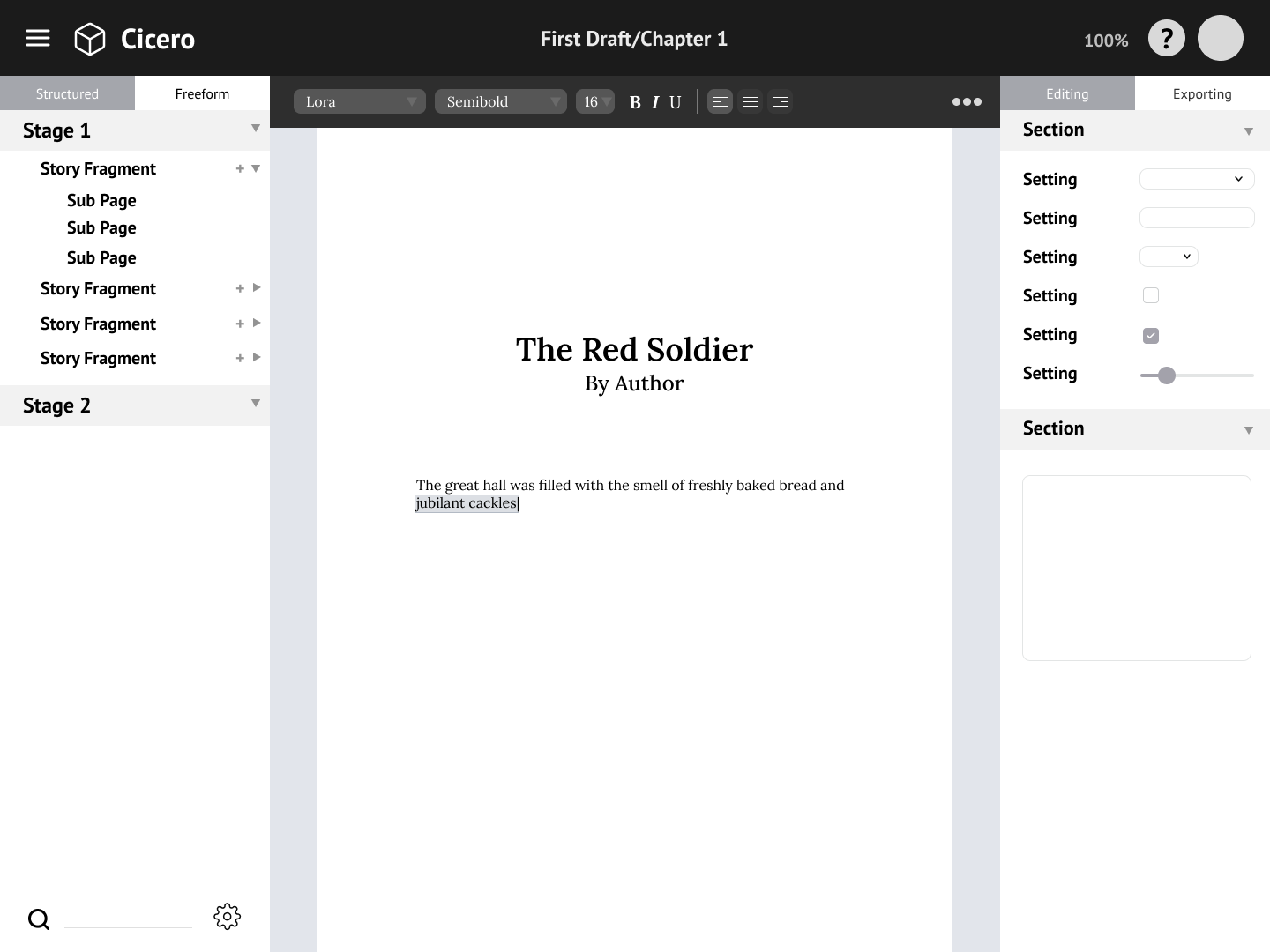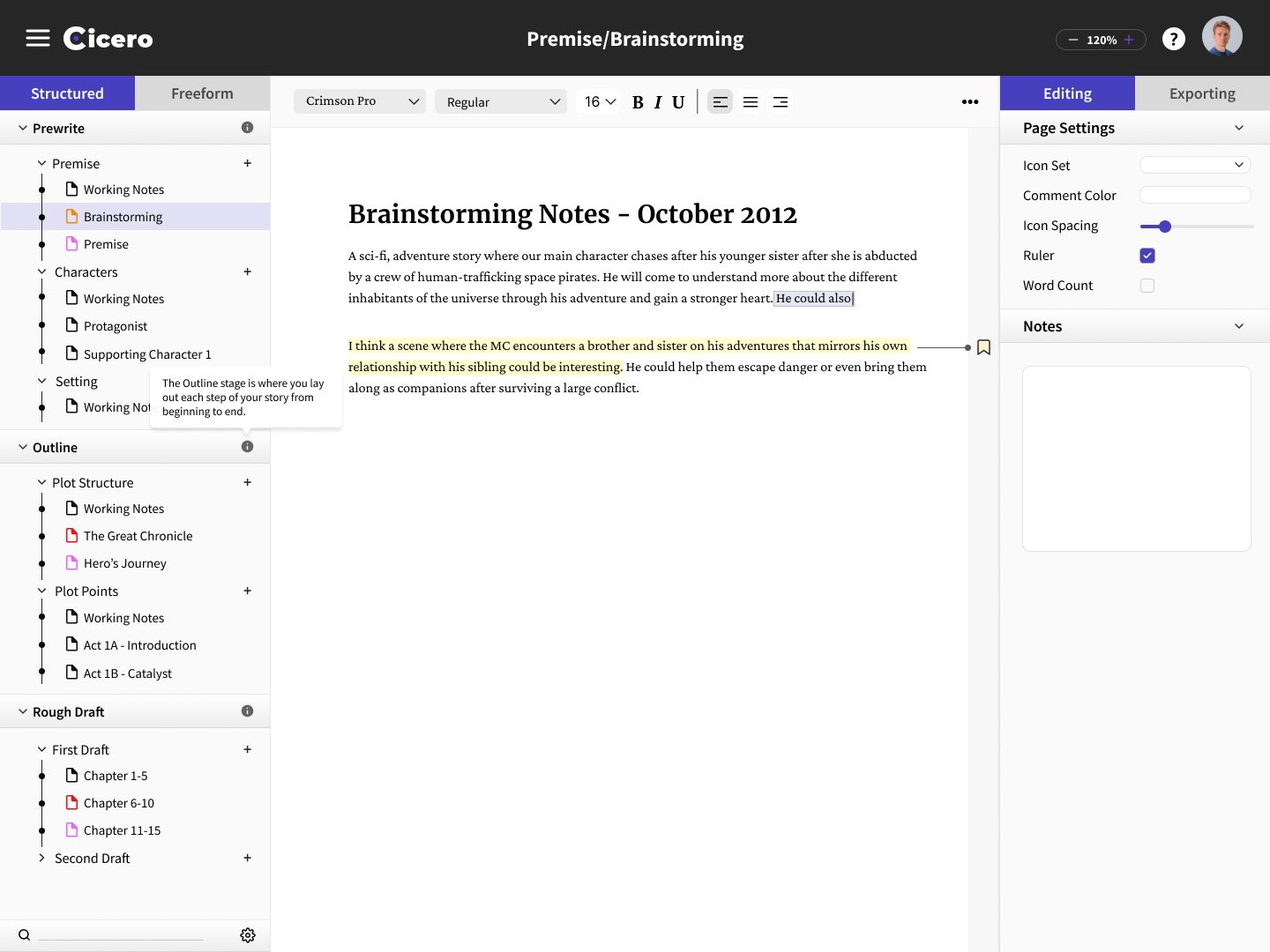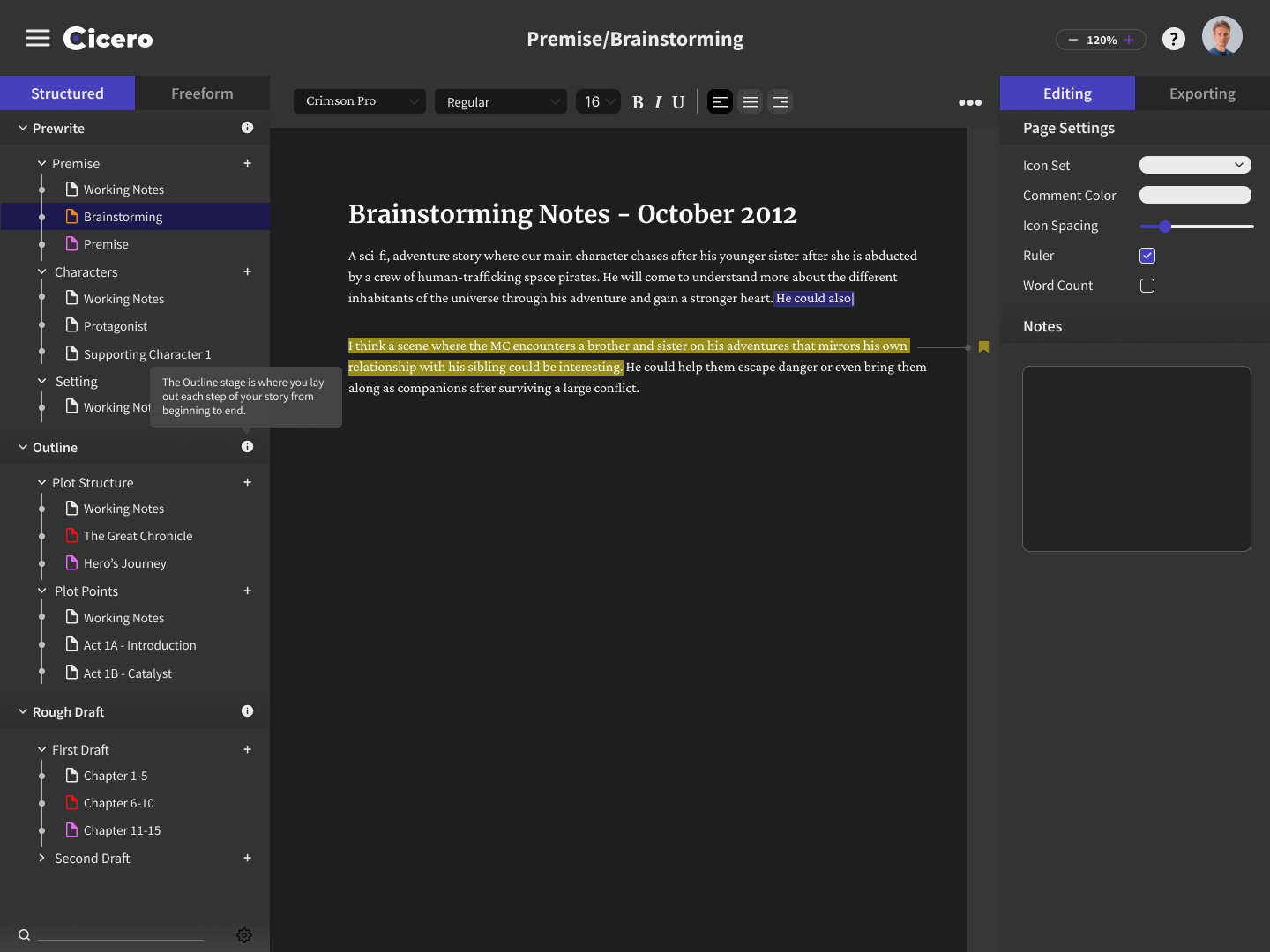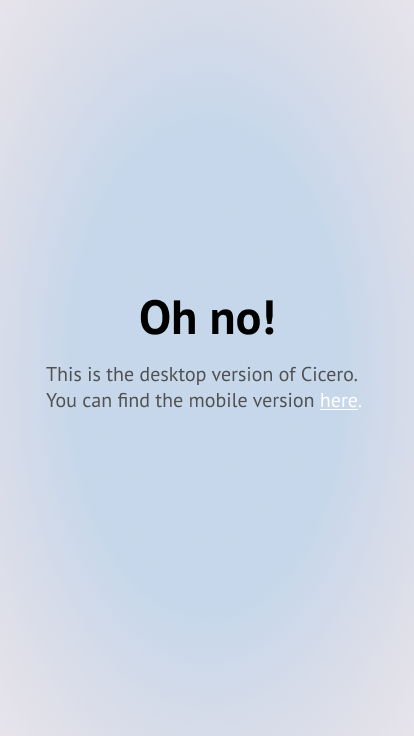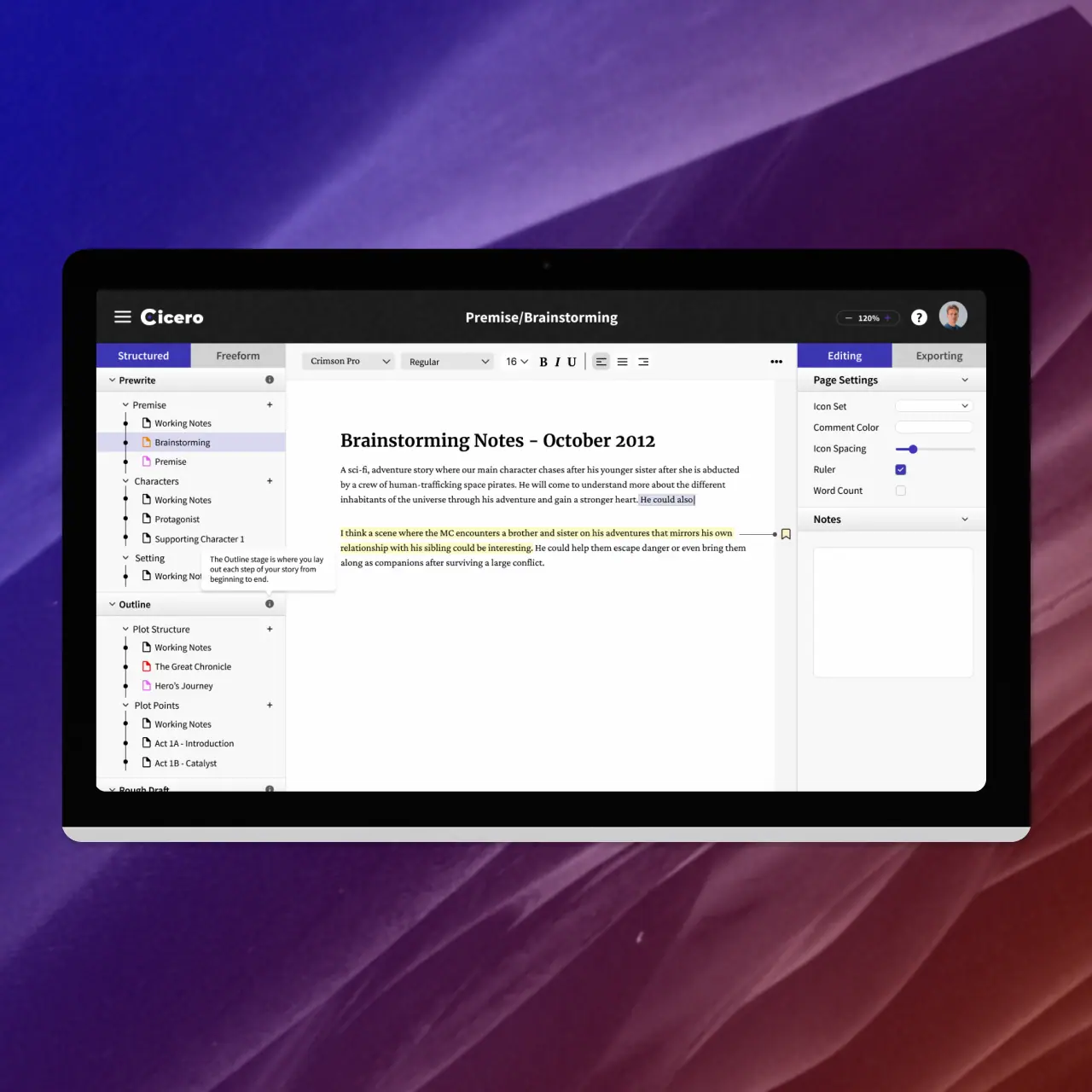
Role: Full-Stack Engineer | UX/UI Designer | Project Manager
Fullstack Development & UX/UI Design for an ambitious web app that offers a clean and flexible word processor for writers. The goal for this project was to build a comprehensive web app that contained everything a user would need, out-of-the-box, to write a story or novel from start to finish.
Focus was placed on giving users the tools they expected without getting in the way of their creativity. It was important that we considered the target audience, the process of creative writing itself, and how we could improve upon competitor products to offer something truly unique in the niche.
Below you will find a more in-depth look at my full process and solution for this project.
